Some of the highlights of this week’s two podcasts on Garden Basics with Farmer Fred, Episodes 184 and 185, are featured in today’s “Beyond Basics” newsletter podcast. One of the highlights of Episode 184 was Raffaele DiLallo, author of “Houseplant Warrior”, venturing into his other horticultural passion in his yard in Cleveland, Ohio: getting tropical plants to survive and thrive…outdoors…in an area of the country where snow blowers are more in demand than a chipper/shredder.
From Episode 185, Emily Murphy, author of “Grow Now”, talks about how to customize your garden mulching to match the needs of your particular plants. And to give you a hint about the thrust of her book, she casually tossed out the German word, “hegelkultur” in our podcast conversation…which is a raised bed building technique long utilized by those who practice permaculture. Not that there’s anything wrong with that.
And, Master Gardener Pam Bone gives us lots of good reasons to NOT plant a fruit tree in the middle of the lawn. But she offers some tips on the precautions to take to do it successfully.
Finding accurate, reputable information (and that’s the key) online is difficult on how to grow trees, especially fruit trees, in a lawn situation. However, the University of Wisconsin-Madison offers tips for commercial orchardists in the Midwest on the benefits and drawbacks of growing grass in the vicinity of fruit trees, in their publication: “Orchard-Floor Management For Fruit Trees”:
That publication is also bullish on establishing “grass alleys”: strips of turf, 5-6 feet wide, between the rows of trees, as long as the turf strips are set back about three feet from the trees: “The grass alley provides a solid place for equipment travel, helps prevent soil erosion, and helps increase water infiltration. Sod also helps to maintain soil structure. …weed invasion can be minimized and sod establishment can be fairly quick.”
Happy 10th Anniversary to Me! (How Gardening Has Helped Keep Me Alive, Courtesy of The Heart-Healthy Garden
The Heart Healthy Garden is a topic that is close to my heart, literally. After being diagnosed with four cholesterol-jammed heart arteries in March 2012, I underwent quadruple coronary artery bypass graft surgery on April 17, 2012. At the same time, I was told I had full-blown Type 2 Diabetes (A1C of 10.4). My general practitioner doctor (at the time) told me after the surgery, “You’re good for three to five years, tops.” I took that as a personal challenge.
The surgery went well and the long road to healing from heart disease and diabetes began...including doctors' orders that a gardener does not want to hear: no lifting anything heavier than a gallon of milk for 3 months! Even more problematic for me: no bike riding for three months. After all, when surgeons slice open your sternum to work on your heart, it takes a long while for that bone to heal, despite being held together with wires.
Thanks to regular exercise and a healthier diet, with a kickstart from low dosages of diabetes and heart medications, I lost over 60 pounds by February 2013, the replacement arteries (taken from the chest) that still service my heart were cholesterol-free, the blood sugar levels were back to near normal (A1C = 5.9), and I no longer needed to take any prescription medications for either of these ailments. With the doctors' blessings, of course. Today, I weigh the same as in 2013. And still ride my bike, over 100 miles a week.
A big part of my success was due to the encouragement and diet tips I got from the nurses who ran the cardiac rehabilitation program at the hospital. They believed - as I did - that there was enough clinical evidence out there that eating right and regular exercise can reverse heart disease and diabetes.
The “exercise” part of the recovery was not an issue. As an avid cyclist, I usually averaged 50 to 100 miles a week on the bike. Living at the time on 10 acres, I got a lot of weight-bearing exercise shoveling 10 cubic yard piles of mulch, and lugging it around in 8 cubic foot wheelbarrows throughout the property to keep my fruit and nut tree orchard fat and happy.
The “Diet” part of the secret? Eat less sugar. Eat more fiber. That included growing, and eating, heart-healthy fruits and vegetables, loaded with fiber.
Most people are familiar with fiber. Fiber is a component of all plant-based foods which cannot be absorbed or digested. It travels relatively intact through your body and out. This is the role of insoluble fiber, the roughage found in many fruits, vegetables and grains that passes through your digestive system and helps promote regularity.
Fiber is also composed of soluble fiber, a type of fiber that dissolves in water to form a gel-like material. Studies at the Mayo Clinic and other institutions have shown that soluble fiber may help lower blood cholesterol levels by reducing low-density lipoprotein, or "bad," cholesterol levels. Soluble fiber may have other heart-health benefits, such as lowering blood pressure, blood glucose levels (important for Type 2 diabetes patients) and inflammation.
Consuming foods rich in soluble fiber became one of my nutritional keystones for recovery. And it worked! If battling high cholesterol levels and diabetes are part of your life, ask your doctor if a high fiber diet (30 or more grams a day of fiber) is right for you. Better yet, ask a registered dietician. Doctors know pills. Dieticians know food. Which do you want to consume for the rest of your life?
If you cast your vote for "food", you, as a gardener, may be wondering, “What are the top five fruits and vegetables with the most soluble fiber that should be part of a heart-healthy backyard garden?” Thanks for asking:
Artichokes
(3.2 grams soluble fiber per 100 grams).
According to the UC Davis Vegetable Research and Information Center website, the globe artichoke is a perennial, cool-season vegetable that yields and produces best when grown near or along the California coast where cool to mild climates prevail. In milder areas of the East Coast, some success has been reported growing from seed varieties, or from transplants such as “Imperial Star”. A mature artichoke plant produces ten or more stems during a season; each stem can provide four to five buds.
Unfortunately, perennial plantings of artichokes are not recommended in areas where warm to hot temperatures are common. However, it is possible to grow high-quality artichokes in inland valleys and low desert regions of southern California by handling the crop as a direct-seeded or transplanted annual crop. Until recently, it was believed that artichoke buds produced from seed-propagated plants were of inferior quality to those produced by vegetative propagation. Recent research at the University of California has shown that seed-initiated artichokes looked and tasted great. Moreover, annual cropping makes growing artichokes feasible in gardens with limited space because the crop does not require long-term space allocation. Quicker rotation with other vegetables is also possible.
To grow artichokes in warm climates, plant seeds or transplants of 'Imperial Star’ in July for inland valley locations or in September for the low deserts.
Blueberries
(3.0 grams soluble fiber per 100 grams).
Up until about 25 years ago, commercial highbush blueberry production was relegated to the cooler, more humid climates, especially in the northern tier of states. The development of southern highbush blueberry varieties meant we could start growing this tasty fruit here in USDA Zone 9 and other in warm climates.
According to the UC Cooperative Extension, rabbiteye blueberries grow in the southeastern part of the country and thrive in hot, humid weather but are not cold hardy. Lowbush blueberries grow in the northeastern states and Canada. Northern highbush blueberries grow from Florida to Maine and the northern tier states and have a high chilling requirement that limits their adaptability.
Southern highbush blueberry varieties have a low-chill requirement and are heat tolerant. Although they are self-pollinating, blueberry fruit set will increase and berries will be larger if two varieties are planted together. Most varieties grow 4 to 6 feet tall here. A few, such as Sunshine Blue (3'), are more compact.
Shell Beans
(1.6-2.2 grams soluble fiber per 100 grams).
This easy-to-grow summertime garden staple should be included in every yard. The horticultural bean (shell bean), is widely grown in many parts of the country. The colorful pods and beans of the horticultural bean make it an attractive addition to the garden and kitchen. The seeds of pinto beans look similar to those of the horticultural beans, but are smaller. They are used widely as brown beans and as refried beans in Mexican dishes. Black beans or black turtle beans make an unusual, delicious black-colored soup. They are easy to grow if given plenty of air movement to prevent the disease problems to which they are susceptible. Kidney beans are the popular chili and baking bean, available in deep red or white types. Navy pea and Great Northern beans are used in soups and as baked beans. Plantings of beans should be made after danger of frost is past in the spring and soil is warmed, since seeds planted in cold soils germinate slowly and are susceptible to rotting. One old nurseryman offers this tip to avoid rotting bean seeds: water the day you plant the seeds; don't water the soil again until you see the bean emerge from the ground.
Apricots
(1.8 grams soluble fiber per 100 grams).
Apricots - as well as other deciduous fruit and nut trees - are available inexpensively as bare root trees in late winter and early spring. According to the annual taste test surveys conducted by Dave Wilson Nursery, the top-rated apricot varieties include the Blenheim, Canadian White Blenheim, Tomcot, Early Autumn, Autumn Glow, and a couple of Apricot-Plum crosses: the Flavor Delight Aprium and the Cot-n-Candy Aprium.
Green Peas
(1.7 grams soluble fiber per 100 grams).
According to the UC Davis Vegetable Research and Information Center website, peas do best when grown during cool weather; warm weather shortens the harvest season. In the Central Valley, low foothills and East Bay, plant peas from September through March. Peas can be grown throughout the country, timed with coolness and humidity.
Bush types grow in most areas of California; vine types do best when planted along the coast. It is essential to provide support for the climbing vine types. Do not use overhead irrigation; it increases the incidence of mildew.
Harvest peas when the seeds and pods are well-developed, but tender enough so they may be crushed between the fingers without separating into halves. Harvest edible pod types at the first sign of seed development. The sugar content of peas readily transfers into starch. Peas overmature quickly and starch conversion continues after picking. Therefore, cook or process (can or freeze) peas soon after shelling.
Bush peas have a shorter, earlier production period than the pole types. However, the pole types require extra work, but yield more and produce for a longer time.
Recommended varieties include: China, snow, or sugar Dwarf Grey; Sugar Mammoth; Melting Sugar; Cowpeas (Southern peas, blackeye peas); Snap (thick, edible pods); Sugar Ann (dwarf); Sweet Snap (semi-dwarf); Sugar Rae (dwarf); Sugar Daddy (stringless, dwarf); Sugar Snap.
And finally, listed from greatest to least, the soluble fiber content (grams of soluble fiber per 100 grams of food) of the most commonly grown garden fruits and vegetables:
(From: Handbook of Dietary Fiber by Sungsoo Cho & Mark L. Dreher)
artichokes 3.2
blueberries 3.0
pinto beans 2.2
apricots 1.8
green peas 1.7
kidney beans/white beans 1.6
raisins 1.3
avocado 1.3
carrots 1.3
eggplant 1.3
oranges 1.1
pears 1.1
peaches 0.9
strawberries 0.9
leeks 0.9
green beans 0.7
cabbage 0.7
cauliflower 0.7
peppers 0.7
potatoes 0.6
peanuts 0.5
asparagus 0.5
celery 0.5
spinach 0.5
sweet potatoes 0.5
turnips 0.5
tomatoes 0.4
apple 0.3
melons 0.3
broccoli 0.3
corn 0.2
lettuce 0.2
walnuts 0.1
olives 0.1
cucumbers 0.1
onions 0.1
radish 0.1
zucchini 0.1
As an Amazon Associate, I earn from qualifying purchases from some of the underlined links in the newsletter. This is how I am trying to keep this a free newsletter. And as long as you buy whatever you want from Amazon using any of those links to get into the Amazon site, I get a few pennies. Thank you.
Thanks for Subscribing and Spreading the Word About the Garden Basics with Farmer Fred newsletter, I appreciate your support.
And thank you for listening to the Garden Basics with Farmer Fred podcast! It’s available wherever you get your podcasts. Please share it with your garden friends.
Fred Hoffman is also a University of California Cooperative Extension Master Gardener in Sacramento County.

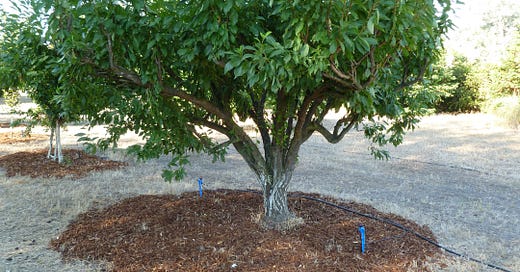









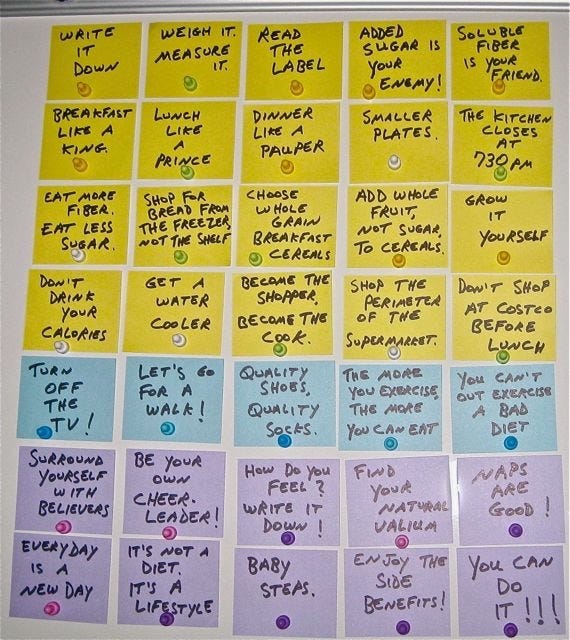


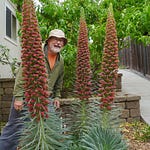

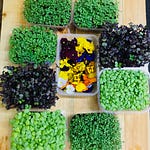
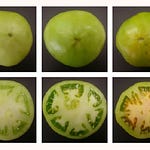

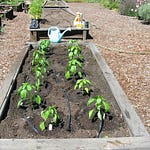
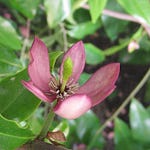
Share this post